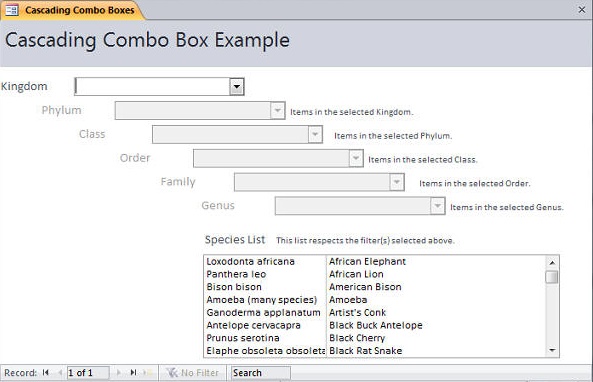Microsoft Access 2010 Rank Function Access
Should You Integrate Microsoft Excel With A Microsoft Database. This is a BIG topic on BIG Data, but these are Excel . So here in this post we will point to three extended posts we did on this topic, in addition to one link to our favorite Access resource and one to our favorite Excel resource, both run by Microsoft MVP’s.
If you have used Microsoft Excel with BIG Data it is likely that you have encountered performance issues, and you have possibly experienced the worst problem, an Excel workbook that does not respond, it just sits there, dead in the water, looking at you. Is it worth knowing how to do this, and to actually be very proficient in doing so? This is something we have been doing for our clients since 1. This is one of the most common solutions we have been providing our clients for 2. So yes, knowing how to do this at the advanced level can make you a good amount of money.
This MSAccess tutorial explains how to use the Access DCount function with syntax and examples. The Microsoft Access DCount function returns the number of records. We usually think of data in sets of related values, but not always. Occasionally, you may need to supply someone with a set of unrelated records, retrieved completely.

This article describes the formula syntax and usage of the RANK function in Microsoft Excel. This is a BIG topic on BIG Data, but these are Excel . The challenge here is saying a little, pointing you to a few in-depth resources, to possibly spark. Queries are very important tool for pulling out, searching and grabbing data from tables. It performs different actions or operations on the database and c.
As such we recommend that you give it a shot. It is extremely common; BIG Data is nothing new, HUGE Data is now beginning to appear, we have several firms each week hire us to resolve their BIG Data performance issues.
So when it comes to BIG Data performance issues, select the Microsoft database that best houses and manipulates the size of your data. This allows you to use VBA to create a fully automated solution. You can use any of the Microsoft databases as the back- end to an Excel front- end. For this post we are selecting Microsoft Access as the back- end database. In this scenario you move massive amounts of data that was originally stored in Microsoft Excel to Microsoft Access.
The data moved out of Excel will populate one or more large tables in Microsoft Access (Less than the 2 gig limit). In this solution Access will not only store the data but Access will also run one or more queries on the data, possibly populating or updating additional Access tables, and Access will return filtered data sets back to Excel.
Integrating Microsoft Excel with Microsoft Access will enhance performance and it will get you past those BIG Data blues. Below you will find two links that will take you to our extended posts on the series. If you are interesting in taking your Excel applications to the next level, harnessing BIG Data, then splitting your application into an Excel front- end, to a Microsoft database back- end, read each of these posts to see what might work best for you and your organization. Microsoft Excel MVP, Debra at Contextures. Each user interacts with the data by using a local copy of the front- end database. This site is about providing an Excel hint, not proving a complex solution. If you would like to discuss your needs and if you would like to receive a quote on what the work would cost, please contact us to discuss your needs in detail.
MS Access: DCount Function. This MSAccess tutorial explains how to use the Access DCount function with syntax and examples. Description. The Microsoft Access DCount function returns the number of records from an Access table (or domain). Syntax. The syntax for the DCount function in MS Access is: DCount ( expression, domain, . This can be a table or a query name. Optional. It is the WHERE clause to apply to the domain. Applies To. The DCount function can be used in the following versions of Microsoft Access: Access 2.
Access 2. 01. 3, Access 2. Htmlpad 2 3 Serial Crack For Adobe. Access 2. 00. 7, Access 2.
Access XP, Access 2. Example. Let's look at how to use the DCount function in MS Access: DCount(. This is the same as the following SQL statement: SELECT Count(.
The results will be displayed in a column called Expr. You can replace Expr. For example: Number. Of. Units: DCount(.
